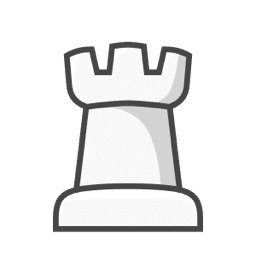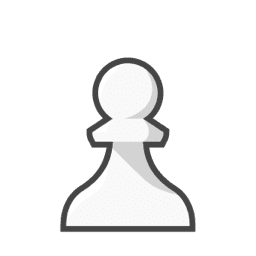How To Play Chess
Chess is won when your opponent is in check and cannot escape. This is called checkmate! Every square in chess has a name, with vertical files from a-h and horizontal ranks from 1-8. Check means that a king is being threatened. A king can never actually be captured, so the other side must get out of check by moving, blocking, or capturing the checking piece.
How The Pieces Move

The King
The king can only move to any square that's directly next to it: up, down, sideways, or diagonal

The Queen
The queen can move forwards, backward, sideways, and diagonally like a king. However, unlike the king, the queen can moveas far as it wants to in each of these directions but cant jump over other pieces.

The Rook
The rook can move forwards, backward, and sideways as far as it wants but can't jump over other peices.

The Bishop
The bishop can move diagonally like a queen, but not forward, backward, or sideways. Each side starts with two bishops, one on a light square and one on a dark square and can only move on its allocated square color.

The Knight
The knight is the only chess piece that doesn't go in a straight line. The knight moves two squares in one direction and then turns and goes one square to the side. Usally he would move to a dark square then to a light and so on. Unlike other pieces than knight can "jump" or "move" over/through other pieces in its path.

The Pawn
Pawns move one square forward and cannot move back. A pawn may advance two squares on its first move. Pawns can only capture one square diagonally ahead.
Additional Rules
Chessboard Setup
Rooks are in the corners, with knights next to them, followed by bishops. Kings and queens take the center squares with the queen on her own color. All pawns go on the 2nd and 7th ranks.
Pawn Promotion
When a pawn reaches the end of the board it “promotes”, it turns into another piece. Most of the time players promote to a queen, but a rook, knight, or bishop is also possible but not a king.